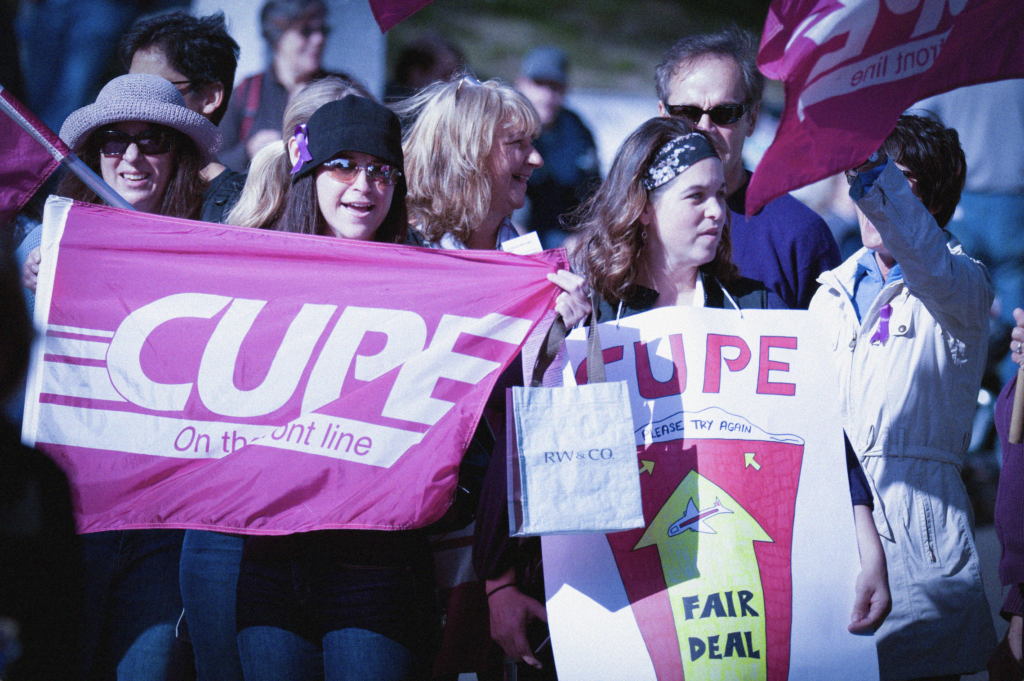A new generation of leaders is gradually getting elected to lead unions and central labour bodies in Canada.
For the first time, the president of the largest labour council in Canada—the Toronto and York District Labour Council—is a Black woman.
Women now head up the Ontario Federation of Labour and the Canadian Labour Congress.
There is also a growing number of women, Black, racialized, and gender non-binary leaders who are leading unions and are elected to bargaining committees and local leadership.
Is this just a shifting of the deck chairs in static organizations or is something more transformative afoot? Will new leaders simply replicate past behaviours in old structures or are they reshaping how unions represent their members and building themselves into a greater force for change?
Representation matters. As employers hire workers, they increasingly reflect broad changes in society. With greater immigration in Canada, more Black and racialized workers are getting hired and, over time, they are running and getting elected to union leadership positions.
In other words, union leadership is beginning to reflect the diverse faces of labour in Canada.
That said, representation in union leadership has tended to lag societal changes. For example, women had always done paid work, but there was a huge influx of women into our workplaces, which accelerated in the 1970s with the coming of age of Canada’s baby boomers. There are women all along who were pioneering activists and leaders but the leadership remained overwhelmingly male.
When I first got involved in my local union at an airline in the late 1970s, the membership was mostly women but the leaders were almost all men.
When, as a young activist, I was given the opportunity to attend a convention of the Ontario Federation of Labour, there were very few women in attendance. While some of the speeches were inspiring, I was most intrigued by a small band of women who were trying to open up more space for women members.
Mostly white women, they focused on issues of abortion, child care, domestic violence, and access to leadership positions—perennial goals for the women’s movement. In spite of the civil rights movement in the U.S., second-wave feminism was much less attentive to racism than it should have been.
Labour faced serious head winds with the deregulation of capital from the Reagan era in the 1980s, especially with open global trade and the push to privatize government responsibilities. Industrial workers’ solidarity had been the strength of the labour movement, but their power dwindled as companies moved production offshore and technology transferred knowledge and skills from workers to tech programmers.
At the same time, with new government services delivering health care, education, and other programs, women poured into new unionized jobs.
But, generally speaking, the labour movement was restricted by hostile governments and restrictive labour laws—despite some inspiring struggles in the late post-war era. Much of the dynamism, energy and success of labour in previous decades was constrained. The labour movement did, however, keep pushing on human rights issues, including fighting racism, homophobia, sexism. Often, the labour movement was a leader in pushing employers towards more equitable hiring and promotion.
There was, and still is, much more to do on this front.
The global pandemic has shone a spotlight on the vast inequalities in our society. Even during the pandemic, billionaires and conglomerates have grown wealthier while workers who truly ensured our survival put themselves on the line, working long hours for limited pay and with few rights.
In the early phases of the pandemic, many rallied around the “build back better” slogan. Now that this new generation of leaders is increasingly taking the helm of labour organizations, what can they achieve? Can labour build back better? Become more inclusive? Harness the power of workers struggling in the face of entrenched income inequality?
These leaders are taking office at a time of unique opportunity. Decades of right-wing theories promoting “trickle down economics”, “a rising tide lifts all boats”, and “the private sector does it better” left the majority of Canadians less secure, our social services frayed, and our institutions undermined.
People are fed up, overworked, and feeling tricked. They are looking for solutions.
The recent action by CUPE-OSBCU education workers in Ontario, led by OSBCU President Laura Walton, forced the Ontario government to back down from an unconstitutional attack on collective bargaining. The union’s action drew tens of thousands of people to the streets and galvanized labour solidarity.
We need to build on that energy.
Many other union efforts in Canada defend some of the most vulnerable workers, from catering staff to warehouse workers, from long-term care workers to hospitality workers. Labour laws are still unfavourable to workers who are organizing and bargaining in sectors where workers most need a union.
It’s clear that labour won’t make progress without a fight.
Tough, committed leadership is only part of the solution. A real plan to build worker power needs to be based on a strategy of organizing. Workers talking to workers, listening to their concerns, inviting them to join a movement to make change—within their union or by forming a union.
Social media can help, but face-to-face organizing is more powerful. Walton herself has told me that face-to-face organizing was the key to building membership support for their struggle.
Having a goal, a strategy to achieve it, and the organizing power of workers talking to other workers can move mountains.
Less encumbered by the hierarchies and routines that sometimes stymied labour action in the past, this new generation of leaders, connected by identity and experiences to the workforce of today, can win badly needed changes. Whether it’s sectoral organizing and bargaining, card check certification, or ensuring that contract workers are classified as employees to gain their full rights, they can make progress.
Huge hopes rest on their shoulders.







